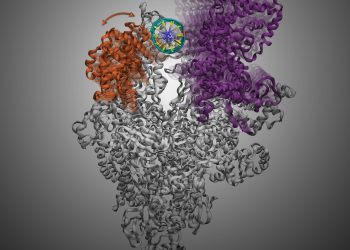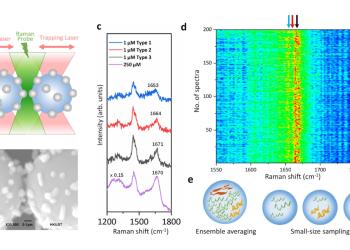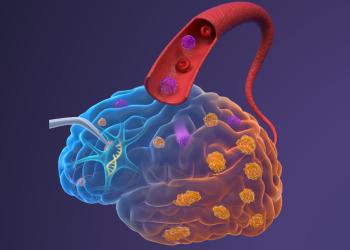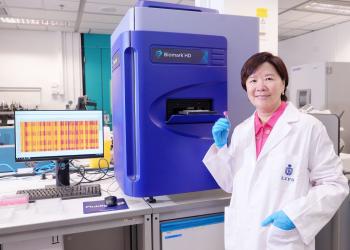新闻及香港科大故事
2021

新闻
科大研发宽禁带半导体氮化镓基互补型逻辑电路 拓宽氮化镓电子学的疆界
香港科技大学(科大)电子与计算机工程学系陈敬教授带领其团队,为方兴未艾的氮化镓(GaN)基电子学研究引入重要的新成员——互补型逻辑电路。相关技术的成功实现大幅拓展了相关研究领域的疆界,有望使氮化镓基电子器件及相关集成电路的功能与性能得到进一步提升,从而更具竞争力。
氮化镓基电子器件已历逾25年的研发,近年来亦开启了快速商业化的进程,并现身于如5G无线通信基站、移动设备的小型快速充电器、激光雷达等应用场景。在不久的将来,能够提供极高效率与功率密度的基于氮化镓的功率转换、电源管理系统有望被应用于诸多涌现中的新型应用,如数据中心、无人驾驶、电动汽车、无人机、机器人等。所有这些应用既相当耗电,又需要供电模块尽可能紧凑,这恰是氮化镓基功率电子产品相对于传统硅基半导体产品的优势所在。为了充分发掘氮化镓的潜能,获得更为智能、稳定、可靠的电源系统,学界与业界在过去十余年间一直在寻找、开发合适的技术平台以实现功率开关和各个外围功能模块的高度集成。其中,逻辑电路在为外围电路中广泛存在,并扮演重要角色。
占据当今半导体产业的统治地位硅基微电子与集成电路的经验表明,互补型逻辑电路是制备大规模集成电路的最优拓扑。“互补(C)”,意味着电路由两种具有相反控制逻辑的晶体管组成,一类拥有n型导电沟道,另一类则是p型沟道。因为主流硅基互补型电路中的晶体管栅极为金属(M)-氧化物(O)-半导体(S)结构,所以更广为人知的名称是“CMOS”。这样的拓扑可以带来诸多好处,其中最引人注目的是它极低的静态功耗。因为控制逻辑相反,所以在任何一个逻辑状态下,总有一类器件处于关断状态,从而有效阻断电流、显著降低功耗。然而,由于高性能p沟道氮化镓晶体管不易获得,与n沟道器件的集成亦困难重重,基于氮化镓的互补型逻辑电路的研发进展缓慢。

新闻
HKUST Scientists Discover How Antibiotics Target Bacterial RNAP to Inhibit Its Gene Transcription(只供英文版本)
A group of researchers at the Hong Kong University of Science and Technology (HKUST) has uncovered the mechanism of how DNA is being melted to start bacterial gene transcription and how one class of antibiotics inhibits this process – an important way in killing bacteria. This discovery provides useful insight on the development of new antibiotics for bacteria that is antimicrobial resistance.

新闻
HKUST Researchers Develop a Novel Raman Spectroscopy Platform to Characterize Intrinsically Disordered Proteins in Dilute Solution (只供英文版本)
It is challenging to analyze proteins at low concentrations, especially for those in a mixture of various conformations such as intrinsically disordered proteins (IDPs). A research team led by Prof. HUANG Jinqing, Assistant Professor of Department of Chemistry at The Hong Kong University of Science and Technology (HKUST), has developed optical tweezers-coupled Raman spectroscopy that can directly probe the structural features of alpha-synuclein, an IDP closely linked to Parkinson’s disease, at the physiological concentration by focusing on individual protein molecules.










